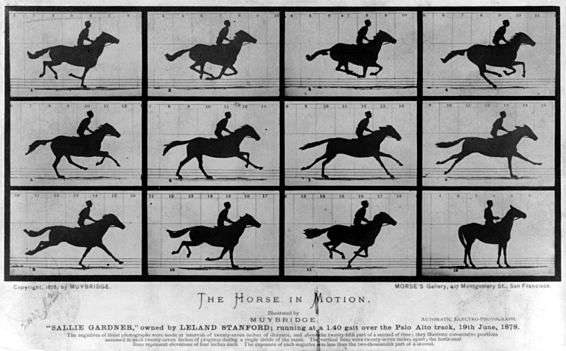Cursorial

A cursorial organism is one that is adapted specifically to run. There are different ways of distinguishing cursorial organisms; for example, they can be distinguished by feeding habits so that a horse is a cursorial grazer and a wolf a cursorial predator. Cursorial organisms are typically adapted to long-distance running at high speeds, rather than animals with high acceleration over short distances; thus, a leopard is considered cursorial, while a cheetah is not. Among vertebrates, animals under 1 kg of mass are rarely considered cursorial, as they typically move in a series of short bursts rather than at a constant speed. All extant cursorial vertebrates are endothermic, allowing high metabolic rates and high endurance, though it is possible some extinct species were ectothermic.
Some species of spiders are also considered cursorial, as they walk much of the day, looking for prey.
Cursorial adaptations
Locomotion of terrestrial vertebrates
Adaptations for cursorial locomotion include:
- Increased stride length by:
- Increased limb bone length
- Adoption of digitigrade or unguligrade stance
- Loss of clavicle in mammals, which allows the scapula to move forwards and backwards with the limb and thereby increase stride length.
- Increased spinal flexion during galloping
- Decreased distal limb weight (in order to minimize moment of inertia):
- Increase in mass of proximal muscles with decrease in mass of distal muscles
- Increase in length of distal limb bones (the manus and pes) rather than proximal ones (the brachium or thigh).
- Longer tendons in distal limb
- Decreased ability to move limbs outside of the sagittal plane, which increases stability.
- Loss of digits.
- Loss of ability to pronate and supinate the forearm
- Hooves, hoof-like claws, or blunt claws for traction (as opposed to sharp claws for prey-capture or climbing)
Locomotion of spiders
Spiders maintain balance when walking, so that legs 1 and 3 on one side and 2 and 4 on the other side are moving, while the other four legs are on the surface. To run faster, spiders increase their stride frequency.[1]
Cursorial taxa
Several notable taxa are cursorial, including some mammals (such as wolverines, wolves, cheetahs (but see above, where cheetahs are specifically NOT considered 'cursorial'), ungulates, agoutis, and kangaroos) and birds (such as the ostrich), as well as some dinosaurs (such as theropods, and Heterodontosauridae). Several extinct archosaurs were also cursorial, including the crocodylomorphs Pristichampsus, Hesperosuchus, and several genera within Notosuchia.
Jumping spiders and other non-web based spiders generally walk throughout the day, so that they maximize their chances of a catch,[2] and web-based spiders run away if threatened.[3]
In evolutionary theory
The presumed cursorial nature of theropod dinosaurs is an important part of the ground-up theory of the evolution of bird flight (also called the Cursorial theory), a theory that contrasts with the idea that birds' pre-flight ancestors were arboreal species and puts forth that the flight apparatus may have been adapted to improve hunting by lengthening leaps and improving maneuverability.
See also
References
- ↑ Anderson, D.T. (1998). "The Chelicerata". In D.T. Anderson. Invertebrate Zoology (1 ed.). Oxford University Press Australia. p. 328. ISBN 0-19-553941-9.
- ↑ Forster, Lyn M. (Nov 1977). "Some factors affecting feeding behaviour in young Trite auricoma spiderlings (Araneae: Salticidae)". New Zealand Journal of Zoology. The Royal Society of New Zealand. 4 (4): 435–442. doi:10.1080/03014223.1977.9517967. Retrieved 24 April 2011.
- ↑ Wilcox, R. Stimson; Jackson, Robert R. (1998). "Cognitive Abilities of Araneophagic Jumping Spiders". In Balda, Russell P.; Pepperberg, Irene Maxine; Kamil, Alan C. Animal cognition in nature: the convergence of psychology and biology in laboratory and field. Academic Press. p. 418. ISBN 978-0-12-077030-4. Retrieved 23 May 2011.